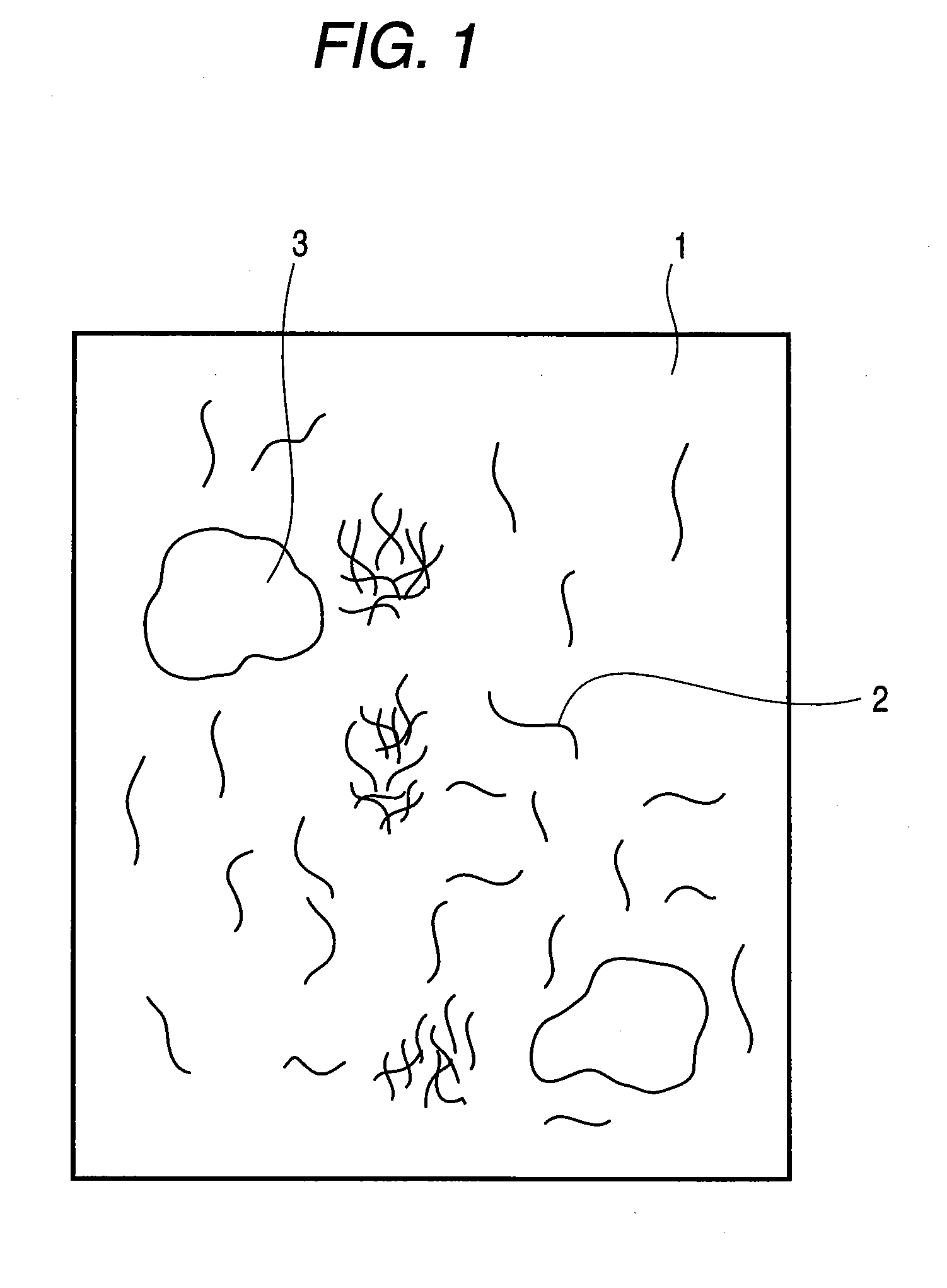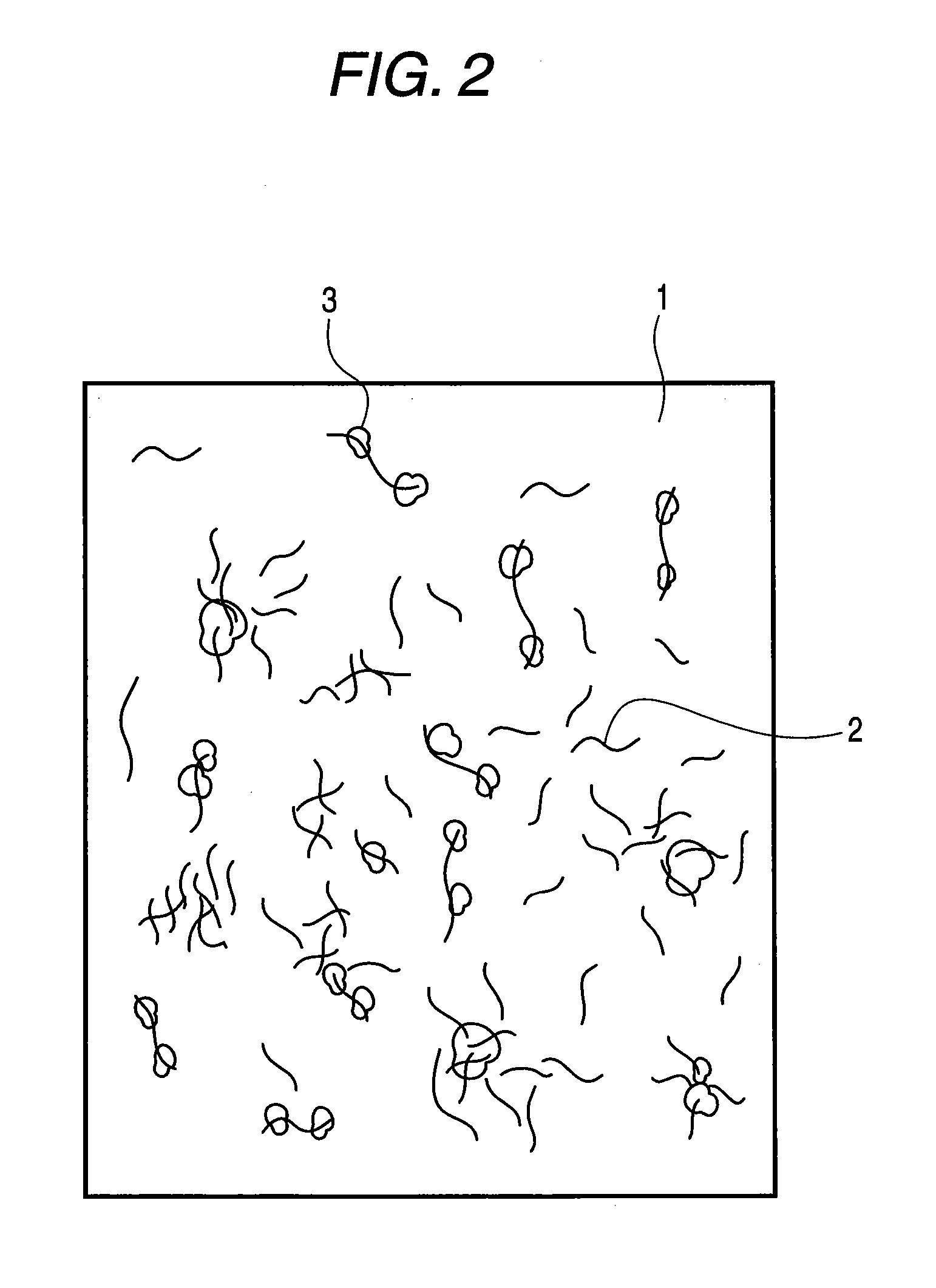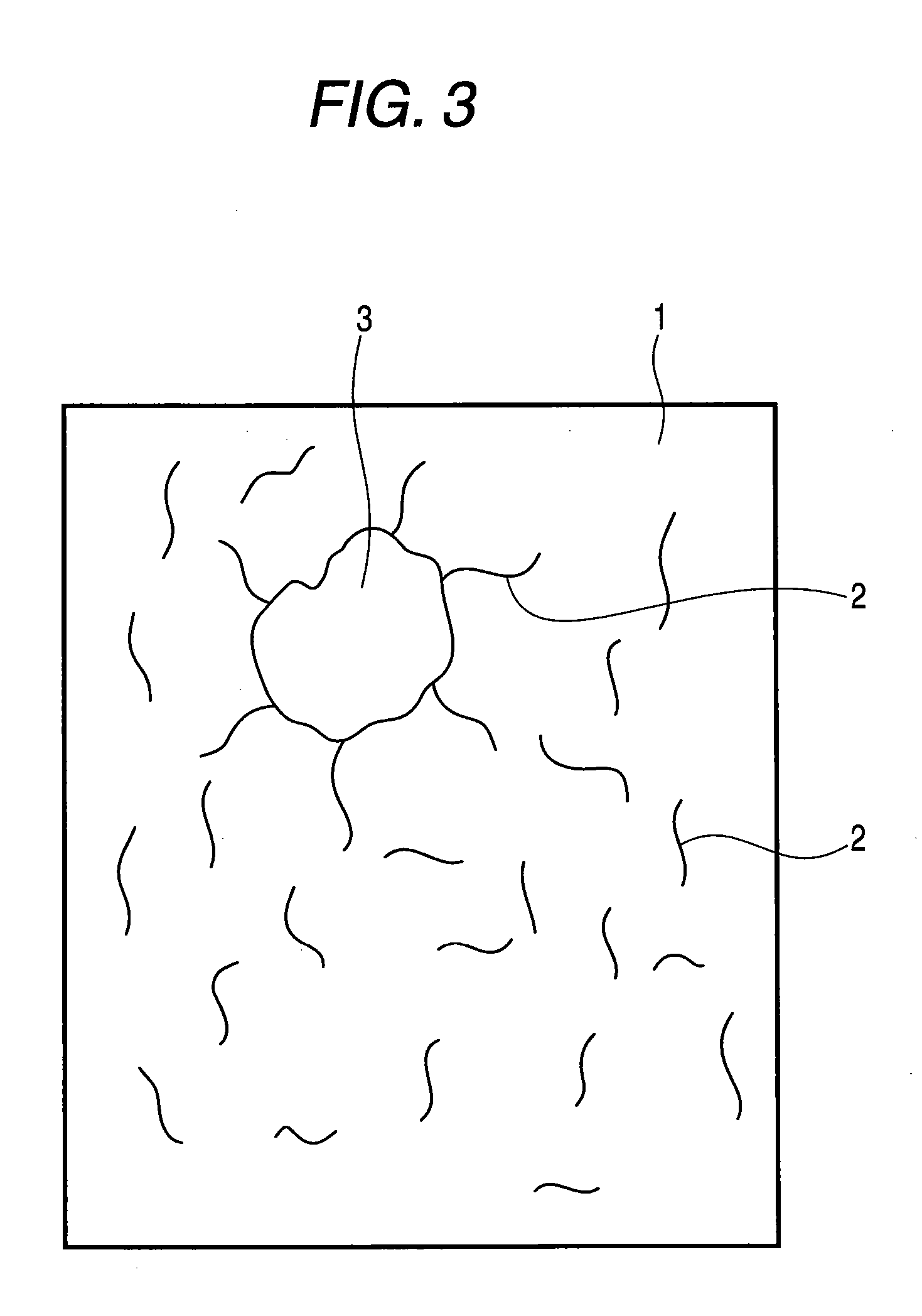Rubber composition
- Summary
- Abstract
- Description
- Claims
- Application Information
AI Technical Summary
Benefits of technology
Problems solved by technology
Method used
Image
Examples
example 1
[0145] Examples based on the invention and Comparative Examples will be specifically described below. In the Examples and Comparative Examples, physical properties of a raw rubber of the resulting vinyl-cis-polybutadiene rubber, physical properties of a compounded material of the resulting rubber composition, and physical properties of a vulcanizate thereof were measured in the following manners.
(1) Content of 1,2-polybutadiene crystalline fiber:
[0146] An extraction residue resulting from subjecting 2 g of a vinyl-cis-polybutadiene rubber to boiling extraction with 200 mL of n-hexane for 4 hours by a Soxhlet extractor was expressed in terms of parts by weight.
(2) Melting point of 1,2-polybutadiene crystalline fiber:
[0147] An extraction residue of boiling n-hexane was determined by a peak temperature of the endothermic curve by a differential scanning calorimeter (DSC).
(3) Crystalline fiber form:
[0148] The vinyl-cis-polybutadiene rubber was vulcanized with sulfur monochlorid...
examples 1-1 to 1-4
AND COMPARATIVE EXAMPLES 1-1 to 1-3
[0165] By using each of the foregoing sample 1 and sample 2, compounding agents other than a vulcanization accelerator and sulfur in a compounding preparation as shown in Table 2 were kneaded by using a 1.7-L Banbury mixer for testing, thereby obtaining a kneaded material which is a silica compounded rubber composition for tire. On this occasion, a maximum kneading temperature was adjusted at 170 to 180° C. Next, this kneaded material was kneaded with a vulcanization accelerator and sulfur on a 10-inch roll, and the mixture was rolled in a sheet form and then charged in a die for vulcanization, thereby obtaining a vulcanizate. The vulcanization was carried out at 150° C. for 30 minutes. The results are summarized and shown in Table 2.
[0166] The compositions of the Examples realize a small die swell, high abrasion resistance and low fuel consumption while keeping wet skid properties as compared with the case of using commercially available high cis...
examples 2-1 to 2-5
AND COMPARATIVE EXAMPLES 2-1 to 2-4
[0167] By using each of the foregoing sample 1 and sample 2, compounding agents other than a vulcanization accelerator and sulfur in a compounding preparation as shown in Table 3 were kneaded by using a 1.7-L Banbury mixer for testing, thereby obtaining a kneaded material which is a rubber composition for sidewall. On this occasion, a maximum kneading temperature was adjusted at 170 to 180° C. Next, this kneaded material was kneaded with a vulcanization accelerator and sulfur on a 10-inch roll, and the mixture was rolled in a sheet form and then charged in a die for vulcanization, thereby obtaining a vulcanizate. The vulcanization was carried out at 150° C. for 30 minutes. The results are summarized and shown in Table 3.
[0168] The compositions of the Examples are greatly improved with respect to the elastic modulus and highly balanced between the die swell and the exothermic characteristic as compared with the case of using commercially available ...
PUM
| Property | Measurement | Unit |
|---|---|---|
| Temperature | aaaaa | aaaaa |
| Temperature | aaaaa | aaaaa |
| Temperature | aaaaa | aaaaa |
Abstract
Description
Claims
Application Information
 Login to View More
Login to View More - R&D
- Intellectual Property
- Life Sciences
- Materials
- Tech Scout
- Unparalleled Data Quality
- Higher Quality Content
- 60% Fewer Hallucinations
Browse by: Latest US Patents, China's latest patents, Technical Efficacy Thesaurus, Application Domain, Technology Topic, Popular Technical Reports.
© 2025 PatSnap. All rights reserved.Legal|Privacy policy|Modern Slavery Act Transparency Statement|Sitemap|About US| Contact US: help@patsnap.com



